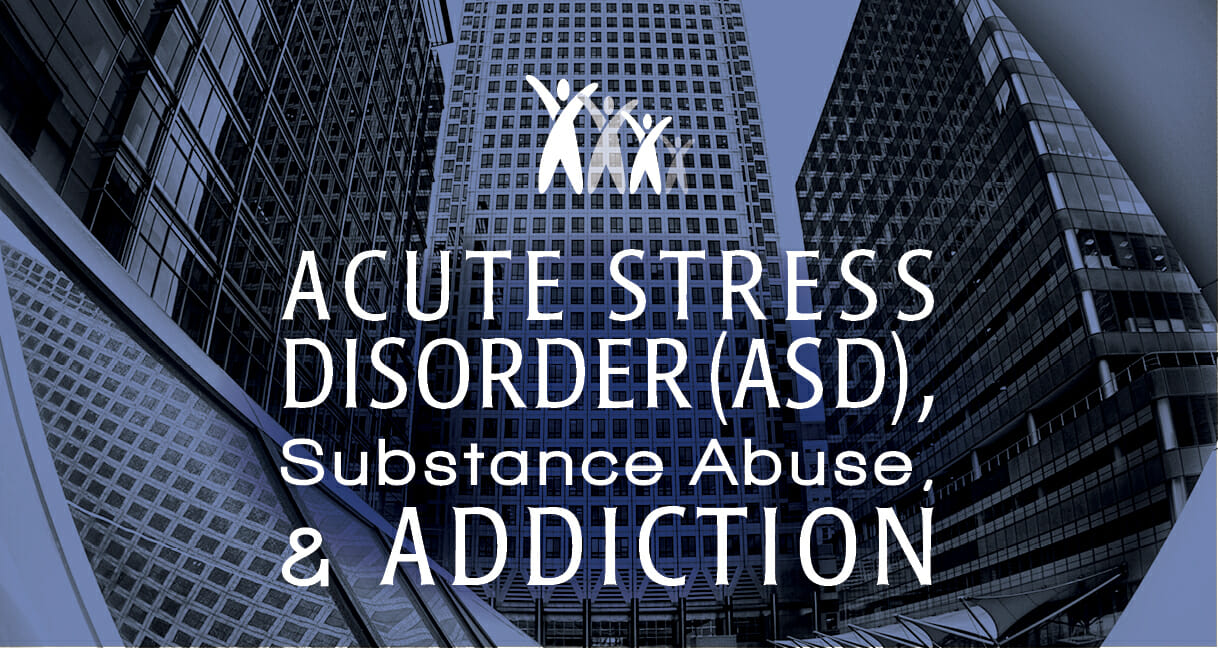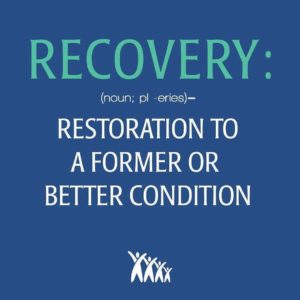Search by category, archive or keyword

Substance abuse and addiction are complicated medical conditions that require understanding and compassion to aid recovery. It’s important to realize that while people have inherent risk factors for addiction, they additionally experience triggers that exacerbate these risk factors to create addictive behavior.
These triggers, also known as comorbidities, help us understand what may be driving a substance abuse problem. A common comorbidity of substance abuse disorders is known as acute stress disorder (ASD). Learn how it plays a role in substance abuse and the development of addiction behavior.
What Is Acute Stress Disorder?
Acute Stress Disorder is still a fairly new recognized medical condition, first introduced in the Diagnostic Statistical Manual, 4th edition (DSM-IV) in 1994.
ASD is characterized by dissociative symptoms such as reduced awareness, amnesia, de-realization, or depersonalization in the first month following a traumatic event. There may also be other symptoms, such as nightmares, insomnia, anxiety, or depressed mood. Heightened reactions to stimuli are also common.
ASD can only be diagnosed in the first month after a traumatic event. If symptoms persist for more than a month, a mental health professional may upgrade the diagnosis to post-traumatic stress disorder (PTSD).
ASD and Substance Abuse

Trauma takes a serious toll on the brain. People can experience psychological and emotional repercussions for months after an accident.
Acute Stress Disorder creates psychological disturbances that impair a victim’s ability to function. These disturbances not only extend to our sense of self and perceptions of the world but also our interpersonal relationships. This creates a domino effect that leads some people to turn to illicit drugs or alcohol as a method of self-medicating.
Trauma results in feelings of isolation and anger. Reactions to stress depend on an individual’s unique neurobiological makeup. Some turn to drugs or alcohol to numb the pain and dissociate themselves from the trauma, if even for a short while. This isn’t a sign of weakness; it’s a defense mechanism to safeguard ourselves from experiencing further trauma. You can see how this can quickly devolve into a vicious cycle of substance abuse and the creation of addiction.
Understanding Brain Chemistry and Addiction
Substance abuse only provides temporary relief, eventually making an addict’s suffering worse over time by creating another need. In fact, prolonged and repeated exposure to illicit drugs creates changes in our brain’s chemistry and circuitry that can have a more detrimental effect than the actual trauma.
Cocaine, for example, creates a rush of endorphins that give users their needed escape, but it simultaneously increases stress hormones. Once the initial high wears off, users will have more stress and anxiety than they did, to begin with. Over time, users become subject to patterns of compulsion and loss of control.
Opioid abuse also increases stress hormone levels in the brain over time. People who suffer from ASD and turn to drugs often find that their original symptoms increase in severity when they come down, which leads them to find relief once again through substance abuse. Unfortunately, this pulls the victim deeper into distress and creates a cycle of anxiety and abuse.
Recognize the Symptoms of ASD
Some people are inherently more at risk for addiction than others – for example, those with a family history of substance abuse disorders are more likely to abuse substances themselves. Lack of family involvement can put you at greater risk, as can being male.
One of the largest risk factors for addiction, however, is having another mental health disorder, like ASD. In fact, a report from the National Institute on Drug Abuse noted that nearly half of all patients with a drug abuse disorder had a comorbid mental disorder. If you’ve recently been the victim of trauma, recognizing the symptoms of ASD can help you get the help you need before turning to coping mechanisms like substance abuse.

Symptoms of ASD vary greatly from individual to individual. Most, however, report feeling anxiety, fear, and reliving the experience or event that triggered the addiction. Others may avoid anything related to the event. For example, a person involved in a serious motor vehicle accident may avoid driving or riding in a car. People with ASD often report dissociative symptoms like “out-of-body” experiences or feeling disconnected from family or friends.
Break the Cycle of Addiction for ASD
Many people suffering from addiction also struggle with stress, but a stressful event can often be the trigger than sends people into drug-abusive behavior. We all handle stress differently, and some of us can handle larger amounts of stress than others. Acute Stress Disorder, however, leads victims to feel such heightened levels of stress that coping with everyday life can become difficult.
When people turn to drugs or alcohol to reduce stress, they actually increase levels of anxiety and stress in the brain. The resulting vicious cycle of addiction and stress is very difficult to treat.
A dual diagnosis of acute stress disorder and addiction requires professional intervention. With quick and effective treatment, people with substance abuse disorders and acute stress disorder can break the cycle of addiction and recover to lead a healthy life.
Mental health professionals will use a variety of techniques to treat addiction and comorbid ASD. These usually include cognitive behavioral therapy, exposure therapy, group support sessions, family therapy, and one-on-one intervention. Victims of ASD may also be prescribed medications to counteract their anxiety and stress.
Find Compassionate Help from Professionals
Unfortunately, addicts often blame themselves for their substance abuse when there is likely a host of issues that lead to it. Such feelings of guilt or shame are exacerbated by hopelessness and despair of addiction. For these individuals, it’s hard to see that the battle is not yet lost. Depending on the type of dependency and the individual, addiction treatments can be tailored to the needs of the addict.
Acute Stress Disorder and a Consequent Addiction Don’t Have to Destroy Your Life or the Life of a Loved One, It’s Never Too Late to Ask for Help!
READ MORE ABOUT HOW INTERVENTIONS HELP YOUR LOVED ONES WITH THEIR ADDICTION:
An intervention is not about how to control the substance user; it is about how to let go of believing you can.
“The most formidable challenge we professionals face is families not accepting our suggested solutions. Rather, they only hear us challenging theirs. Interventions are as much about families letting go of old ideas as they are about being open to new ones. Before a family can do something about the problem, they must stop allowing the problem to persist. These same thoughts and principles apply to your loved one in need of help.”
Mike Loverde, MHS, CIP



